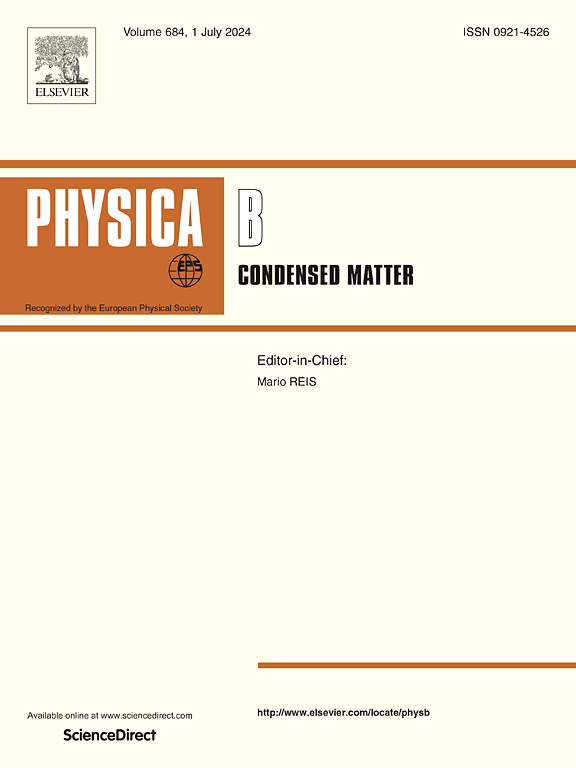Tunneling of Dirac fermions in graphene nanostructure modulated by time dependent rectangular wave potential
IF 2.8
3区 物理与天体物理
Q2 PHYSICS, CONDENSED MATTER
引用次数: 0
Abstract
We investigated theoretically the transmission properties of Dirac Fermions tunneling through a periodically (sinusoidal and rectangular) driven electrostatic barrier in Monolayer graphene. For the time harmonic potential with moderate to high the central Floquet band is found to be almost cloaked for the Klein transmitted electron in contrast to electron at higher grazing incidences. As a time periodic drive, we mainly focused on the use of rectangular wave electric signal to modulate the transparency of the barrier. It is noted that the asymmetric Fano resonance, a characteristic feature of photon assisted tunneling, is more likely to occur for rectangular drive in contrast to the harmonic one. The height of the modulating potential is particularly responsible for the dressing effect of the barrier. The position and nature of the FR can be tailored by changing the height and frequency of the rectangular drive. Moreover, the duty cycle of the driving potential turns out to be an important controlling parameter for the transmission process. Thus, the rectangular modulation plays an important role for the occurrence and detection of the Fano resonances which is vital for the use of graphene nanostructure in the field of detectors, sensors, modulators etc. The present work attempts for the first time, to realize the effect of duty cycle on the quantum interference in semiconductor nanostructures.
求助全文
约1分钟内获得全文
求助全文
来源期刊

Physica B-condensed Matter
物理-物理:凝聚态物理
CiteScore
4.90
自引率
7.10%
发文量
703
审稿时长
44 days
期刊介绍:
Physica B: Condensed Matter comprises all condensed matter and material physics that involve theoretical, computational and experimental work.
Papers should contain further developments and a proper discussion on the physics of experimental or theoretical results in one of the following areas:
-Magnetism
-Materials physics
-Nanostructures and nanomaterials
-Optics and optical materials
-Quantum materials
-Semiconductors
-Strongly correlated systems
-Superconductivity
-Surfaces and interfaces
 求助内容:
求助内容: 应助结果提醒方式:
应助结果提醒方式:


